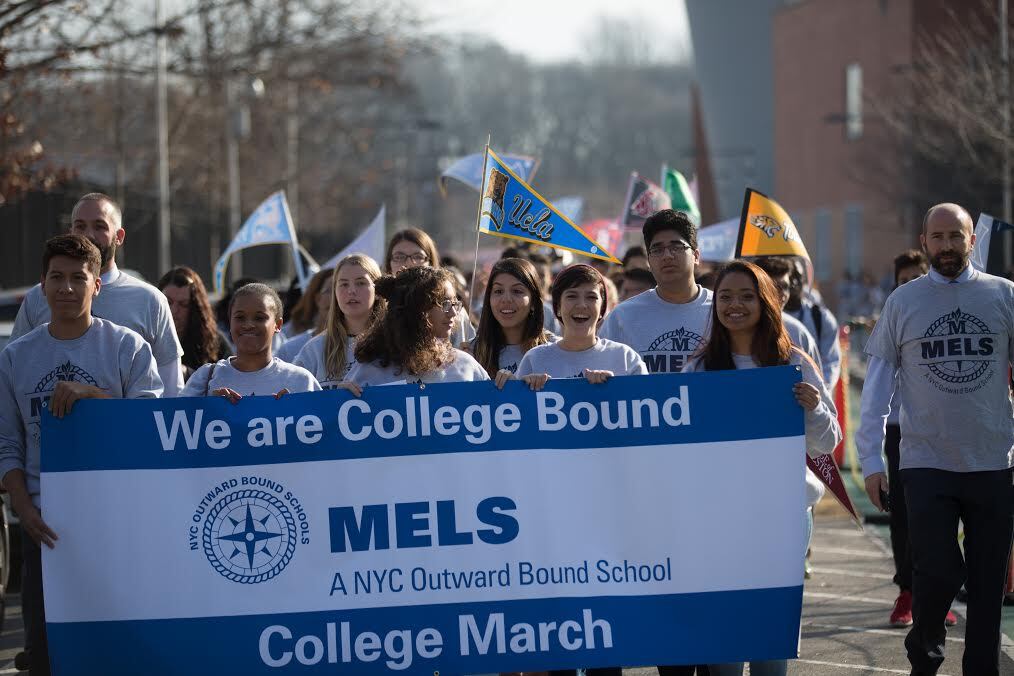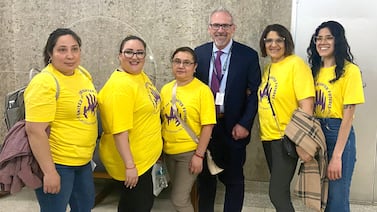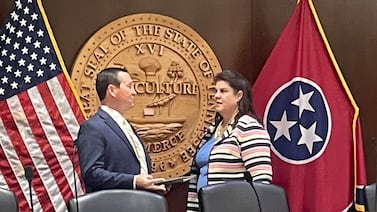More than a third of New York City’s high schools might lose their superintendents and be scattered to new supervisors across the system under a possible restructuring plan, Chalkbeat has learned.
The proposal is already generating backlash among the 164 schools in the city’s “Affinity” network, which include schools that exclusively serve new immigrants, deploy alternate assessments in lieu of state exit exams, or have a career focus.
Many of their principals rely on partnerships and collaborations with like-minded schools even as they’re scattered across the city. The schools are supported by deep relationships with nonprofit or university partners, such as New Visions, Outward Bound, Urban Assembly and CUNY, giving the schools the ability to collaborate on curriculum, teacher training, and share best practices.
But unlike most of the city’s schools, which are overseen by geographically-based superintendents, Affinity schools are supervised by a separate set of centralized superintendents and have their own citywide support office, which provides help with school budgets, hiring, and training opportunities.
Now, city officials have quietly been discussing breaking up the network, reassigning the superintendents, and disbanding its central support office, according to a draft of a letter from Affinity principals that was obtained by Chalkbeat.
“We are deeply concerned that the substance and timing of this reorganization will be deeply damaging to our schools and the students and families we serve,” the principals wrote, noting that many of their schools post higher-than-average graduation rates. “The relationships that have been built between superintendents, partners, and coaches who support us are crucial and have allowed our schools to work together within the superintendencies to improve teaching and learning.”
Multiple people connected to the Affinity schools, who spoke on condition of anonymity, said there had been little discussion about the possible changes or why they were being considered, with some wondering whether it was an attempt to save money.
Many expressed worry that shifting the schools’ supervision comes at a precarious moment, as schools grapple with resuming in-person instruction this fall and face massive staffing and logistical challenges.
Education department officials did not dispute that changes were in the works, and hinted that there might be budget considerations.
“No decisions have been made and we will be transparent with school communities with up-to-date information as soon as it is made available,” Nathaniel Styer, a department spokesperson, wrote in an email. “With our extraordinarily difficult budget environment, everything is on the table while our goal is to minimize the impact on student learning.”
Longer term, some observers said a shakeup could make it challenging for schools within the network to collaborate and ultimately make good on their missions.
“It’s going to be much more difficult for them to continue a network of like schools,” said Norm Fruchter, a consultant at NYU’s Metro Center who has written about the Affinity network. “If they now are reporting to a local superintendent, how are they going to manage to reach out and work with other schools in their network?”
There are also longstanding power dynamics at play. Under the Bloomberg administration, schools were given the option of joining one of dozens of support networks, some of which were affiliated with nonprofits and universities. But under schools Chancellor Carmen Fariña, those networks were dissolved and local superintendents were given new authority to directly supervise schools.
But there was one important exception: The Affinity schools were allowed to retain a separate network of support with their own superintendents after some politically-connected nonprofit leaders exerted pressure. That may give hope to some that the current reorganization could be blocked.
“In some ways, that was the crux of the debates around the dissolution of the [network structure] and the tradeoff of a geographically-based system and one that was based on a substantive connection between schools,” said Aaron Pallas, a professor at Teachers College. “Carmen decided she wanted something that was as close to geographically-based as possible.”
Some parents said they have started to get wind of a possible shakeup and are worried that it will weaken the schools. Kemala Karmen, whose 10th grade daughter attends a high school that uses alternative assessments in lieu of state exit exams, said she is nervous about possible changes.
The Affinity network “allows for professional communities to develop, and that directly affects my children,” she said. “Why would you take away what’s working for these schools?”








